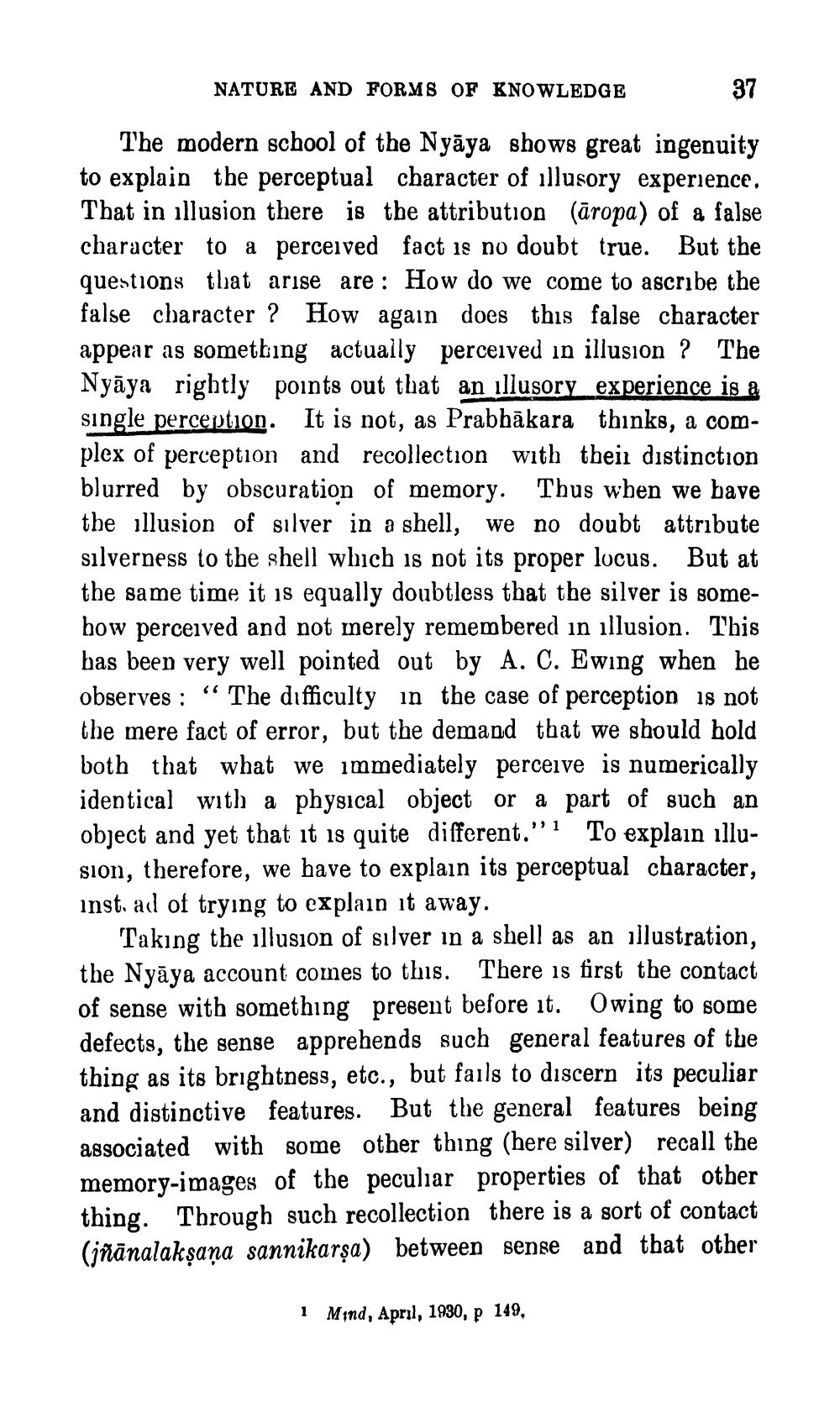________________
NATURE AND FORMS OF KNOWLEDGE
The modern school of the Nyaya shows great ingenuity to explain the perceptual character of illusory experience. That in illusion there is the attribution (aropa) of a false character to a perceived fact is no doubt true. But the questions that arise are: How do we come to ascribe the false character? How again does this false character appear as something actually perceived in illusion? The Nyaya rightly points out that an illusory experience is a single perception. It is not, as Prabhakara thinks, a complex of perception and recollection with their distinction blurred by obscuration of memory. Thus when we have the illusion of silver in a shell, we no doubt attribute silverness to the shell which is not its proper locus. But at the same time it is equally doubtless that the silver is somehow perceived and not merely remembered in illusion. This has been very well pointed out by A. C. Ewing when he observes: "" The difficulty in the case of perception is not the mere fact of error, but the demand that we should hold both that what we immediately perceive is numerically identical with a physical object or a part of such an object and yet that it is quite different." To explain illusion, therefore, we have to explain its perceptual character, inst. ad of trying to explain it away.
"1
Taking the illusion of silver in a shell as an illustration, the Nyaya account comes to this. There is first the contact of sense with something present before it. Owing to some defects, the sense apprehends such general features of the thing as its brightness, etc., but fails to discern its peculiar and distinctive features. But the general features being associated with some other thing (here silver) recall the memory-images of the peculiar properties of that other thing. Through such recollection there is a sort of contact (jñānalakṣaṇa sannikarṣa) between sense and that other
1
37
Mind, April, 1930, p 149,




